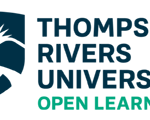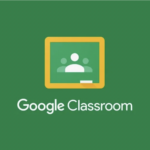What should institutions consider before adopting new technologies?
Institutions need to consider the student first and always first. If we are adopting this technology on a whole-school, whole-district, whole-province etc. level, 1- how is it going to impact every single student, and 2- how is it going to benefit every single student? If the first thing an institution considers about a new technology is anything other than how it relates to students, they have already started at the wrong spot.
Budgets, policies, preferences, and bias are all things that can be moved or, if that’s too much, shifted a little one way or another, to accommodate a truly beneficial learning technology. The impact a technology has on students and their families is not a moveable or “shiftable” factor.
What should instructors consider before implementing new tools or approaches to teaching in their own practices?
As I said before, always students first. When investigating or researching new tools in their own practice, the first thing instructors need to think is 1- how is this going to impact ALL of my students? And 2- how is this going to benefit ALL of my students.
Students these days are wicked smart with technology, even in kindergarten. Last December I was working on reading with an 8-year old grade 2 student and had to find a document on my computer. It was lost deep in the depths of brightspace and I could not find it to save my life. After 5-minutes of giggling and making jokes about how bad I was with technology, the student asked to see my computer, asked what the document was called, and then hit 3 buttons and there the document was (apparently they had seen a search bar at some point when I was browsing through pages, and they were laughing at me because i skipped right past it).
Regardless, young students are incredibly capable of learning the complex strategies necessary to use different technologies, we just have to make sure we choose the technologies with a clear intention of what we’re going to use it for, how we’re going to teach the students to use it, and how it’s going to be more efficient/effective/beneficial to use, than whatever our previous method was.
For example, if I was looking for a tool to record or document inquiry throughout the year, my first thought would be WordPress, because I love its structure and how you as the use have control over how the interface looks. It’s also very upfront with where data is stored, how it’s used, who sees what etc., and it’s local to BC, so for me this checks all the boxes.
However, if I’m in a Kindergarten class, it doesn’t matter that wordpress checks all the boxes, just attempting to teach them how to use this tool, no matter how much it’s scaffolded, would be overwhelming and have more of a negative impact on them, than it would a positive one.
If I were really dead set on sticking with wordpress, I might create a single classroom website, with a tab for each student where I can post images of whatever work they create to represent their inquiry. This way, we have one central location for all of the inquiries going on in class, which would be easy to scaffold and teach students to navigate as a viewer for them to follow along with their inquiries.
What hidden motivations may impact the adoption of new technological tools?
Drawing on the reading by Regan, P. & Jesse, J. (2019) from module 3, if there is even the off chance that a student’s or family’s privacy can be compromised by this new technology, its implementation needs to be shut down immediately. Imagining a scenario similar to one from that reading, if student data relating to discipline and/or violence is connected with those same student’s addresses, and the company storing this data makes this connection. If their motives are malicious enough (although I hope no one’s are) they can then take that data and represent it to show that the population from X neighbourhood is more violent than the population from Y neighbourhood.
This is now incredibly valuable data because it shows that it is probably more dangerous and less desireable to live in neighbourhood X, and safer and more desirable to live in neighbourhood Y. They can then sell that information to real estate companies, banks, or mortgage brokerages, to prove that neighbourhood X is less desirable than neighbourhood Y, therefore the value of homes in neighbourhood X should decrease and the value of homes in neighbourhood Y should increase. And now, the third party company hosting servers that contain student data has altered the real estate market.
Now is this likely to happen? Nearly impossible. However, this example highlights how valuable the data we store on these servers is.
A more likely hidden motivation here in BC would be a conflict of interest between a Ministry of Education worker here, and a tech service provider. This is more plausible as we recently saw it happen in May of this year, with the CEO of BC housing directing grants to his wife’s non-profit organization. The reason conflict of interests exist and are distinguished, is to eliminate as much bias from the decision making process as possible. When bias is included in the decision making process, it skews the ability for those involved to make an honest and informed decision, because they are also considering the component of how they can benefit their partner, or how not choosing them will impact their relationship.
Unfortunately, education is deeply political, thus political motivations often work their way in. The most considerable of this that I have seen is the ParentsVoice BC party that represents candidates for school board trustees. Their principles follow the same common theme of right-wing, christian, conservative views of education; 1- Parents are the primary educator of their children and, as such, it’s only by representing parents that schools have any authority. 2- Wide-open transparency in curriculum and behavioral approaches is to be promoted. 3- Education should reflect the values of the local community in which they are taught. Otherwise why have local school boards? 4- Educational excellence: less indoctrination, more education.
There are very obvious issues here, the greatest however, being their closing statement which is the fourth example above. The new BC curriculum, and BC schools in general are highly regarded to be best in the world. Our ministry uses the most up to date research to influence curriculum and policy, hence why we have so many changes coming at different times. By writing that statement as strategically as they did, it implies that we are not yet excellent in education, which could not be further from the truth. With this statement, it isn’t that hard to see how those who are already afraid of these subjects, believe and support their cause, without a single source, citation, or piece of evidence.
How could these motivations impact the future of education long term?
The first motivation, of discounting services in order to sell personal information, is nearly impossible here in BC, due to how strict our privacy laws are. However, if we didn’t have those protections, this motivation would make it difficult to trust any third party service provider to manage important systems. At the moment, we do have this in BC, where a Japanese company named Fujitsu, provides the software and server services necessary for MyEdBC to run smoothly in almost every district in the province. If a case of someone selling the information of
BC students were discovered, the best solution would probably be for the government to purchase a similar company, and oversee all of its inner workings.
The second motivation, of a conflict of interest, gives kindling to the fire of people who don’t believe/trust the government. If we have CEO’s, or department heads, or people in significant positions of power doing this, I wonder how many people really knew before the audit and discovery of the connection between BC Housing and his wife’s non profit.
Last is the motivation of politics. Using ParentsVoiceBC as an example, we know exactly who their target audience is. Their message contributes to the reason why far-right beliefs in education, and other aspects of society, are able to be believed by so many, and it is because of how consistent, organized, and “clear” (plain really) the information is. These trustees have influence over how and what students learn, and would definitely impose the views of the party, or their own views into the who/what/where/when/why students learn.
Reflection
I chose this activity because it reminded me of the story I heard in may about the conflict of interest that occurred with BC housing. I also had never thought deeply about how our technologies control us without us even truly recognizing it. We joke and say we’re addicted to our phones, or that they’re listening to what we’re saying, or (insert other conspiracies here). Yet we do so comedically, without making any effective change to how we use them as tools.
Connection to Goals
How can open learning work effectively for primary aged learners (K-3)?
When stored safely and properly, open learning can act as a fantastic tool to record student learning, and keep records of how each individual child has developed/what their needs and strengths are, as they work through the elementary and secondary school system.
How can open learning be used to support Social Emotional Learning (SEL)?
This activity didn’t touch on much that was relevant to SEL, however I would say that with the way that these technologies are impacting our emotions and mental health, becoming cognizant of our usage of them and how they “use” us could help us work towards better regulating our emotional responses to things we view/experience through our technologies.
How can Universal Design for Learning (UDL) guidelines be applied to open learning?
Again, this reading didn’t touch much on inclusive design or UDL guidelines, however I would say for this point, that these technologies have nearly the effect explained in the reading, on all young people (<30 years old) regardless of how able or disabled they are. The tools available these days to make your devices more accessible are crazy. Yes- they allow a broader scope of people to use the product, but in doing so, subconsciously impact the user greatly

